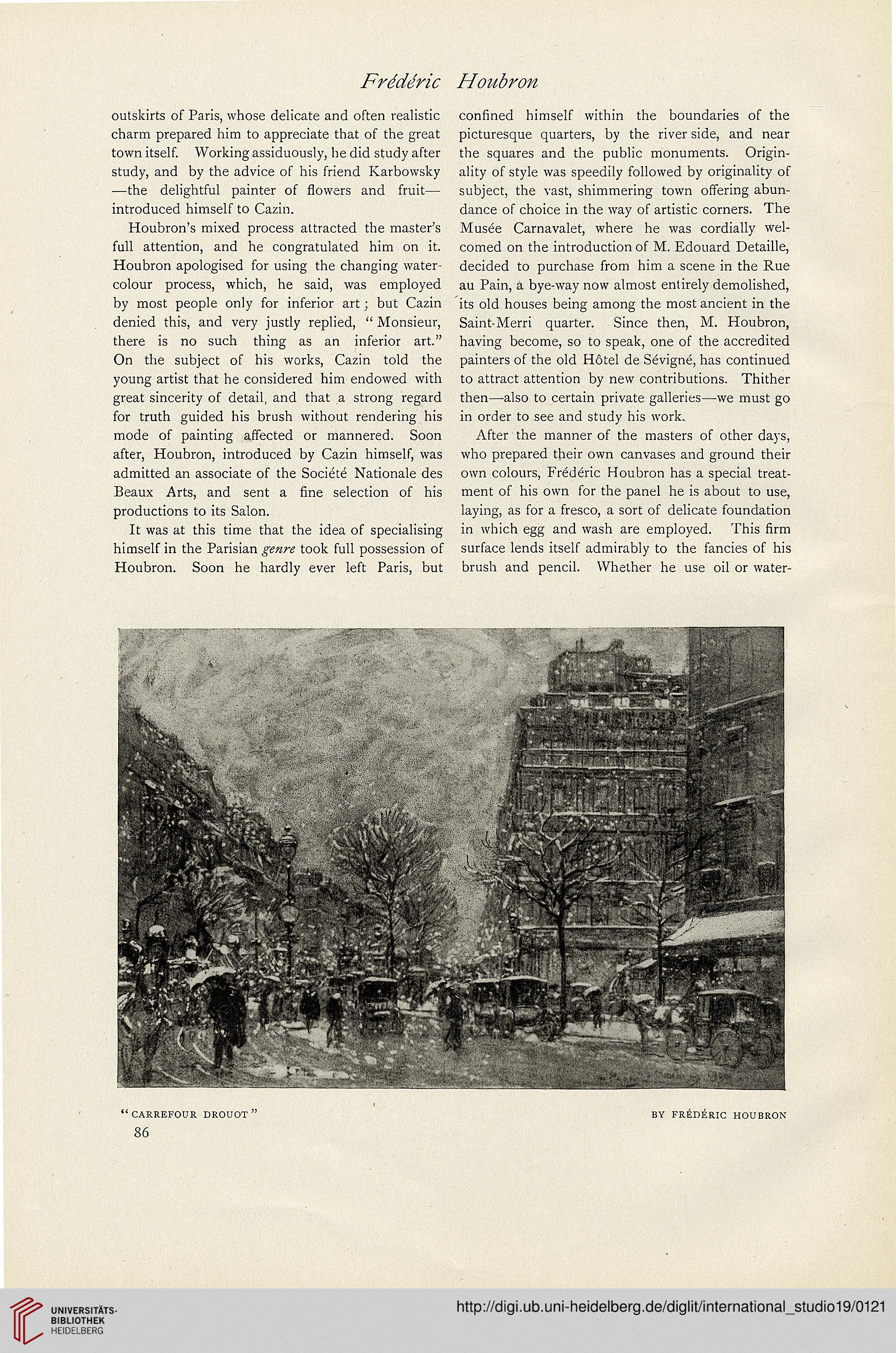outskirts of Paris, whose delicate and often realistic
charm prepared him to appreciate that of the great
town itseif. Working assiduously, he did study after
study, and by the advice of his friend Karbowsky
—the deiightful painter of Howers and fruit—
introduced himself to Cazin.
Houbron's mixed process attracted the master's
full attention, and he congratulated him on it.
Houbron apoiogised for using the changing water-
colour process, which, he said, was emptoyed
by most peopie oniy for inferior art; but Cazin
denied this, and very justiy replied, " Monsieur,
there is no such thing as an inferior art."
On the subject of his works, Cazin told the
young artist that he considered him endowed with
great sincerity of detaii, and that a strong regard
for truth guided his brush without rendering his
tnode of painting affected or mannered. Soon
after, Houbron, introduced by Cazin himself, was
admitted an associate of the Societe Nationaie des
Beaux Arts, and sent a hne seiection of his
productions to its Saion.
It was at this time that the idea of speciaiising
himseif in the Parisian ^72?^ took fuii possession of
Houbron. Soon he hardiy ever ieft Paris, but
confrned himseif within the boundaries of the
picturesque quarters, by the river side, and near
the squares and the public monuments. Origin-
aiity of styie was speediiy foiiowed by originaiity of
subject, the vast, shimmering town offering abun-
dance of choice in the way of artistic corners. The
Musee Carnavaiet, where he was cordiaiiy wei-
comed on the introduction of M. Edouard Detaiiie,
decided to purchase from him a scene in the Rue
au Pain, a bye-way now aimost entireiy demoiished,
its oid houses being among the most ancient in the
Saint-Merri quarter. Since then, M. Houbron,
having become, so to speak, one of the accredited
painters of the oid Hotei de Sevigne, has continued
to attract attention by new contributions. Thither
then—aiso to certain private gaiieries—we must go
in order to see and study his work..
After the manner of the masters of other days,
who prepared their own canvases and ground their
own coiours, Frederic Houbron has a special treat-
ment of his own for the panei he is about to use,
iaying, as for a fresco, a sort of deiicate foundation
in which egg and wash are empioyed. This hrm
surface iends itseif admirabiy to the fancies of his
brush and pencii. Whether he use oii or water-




